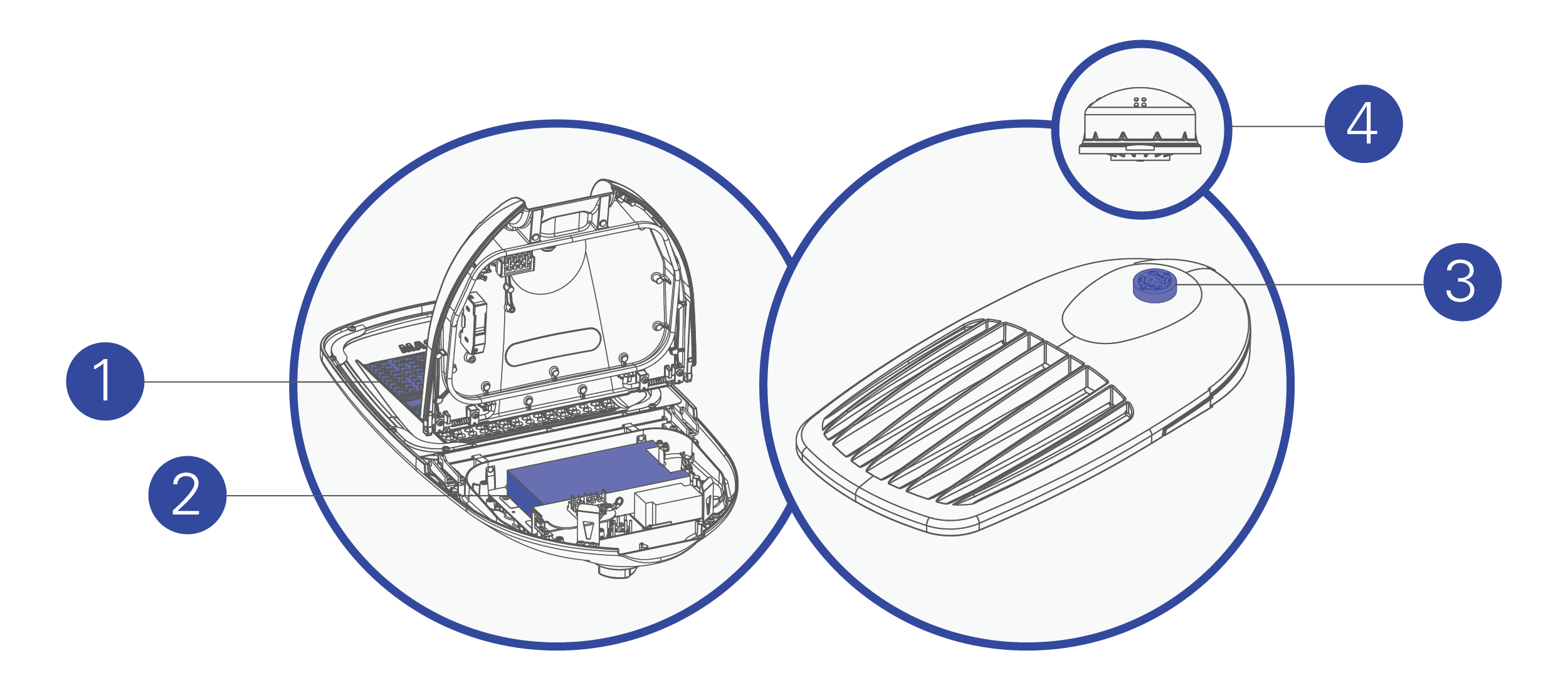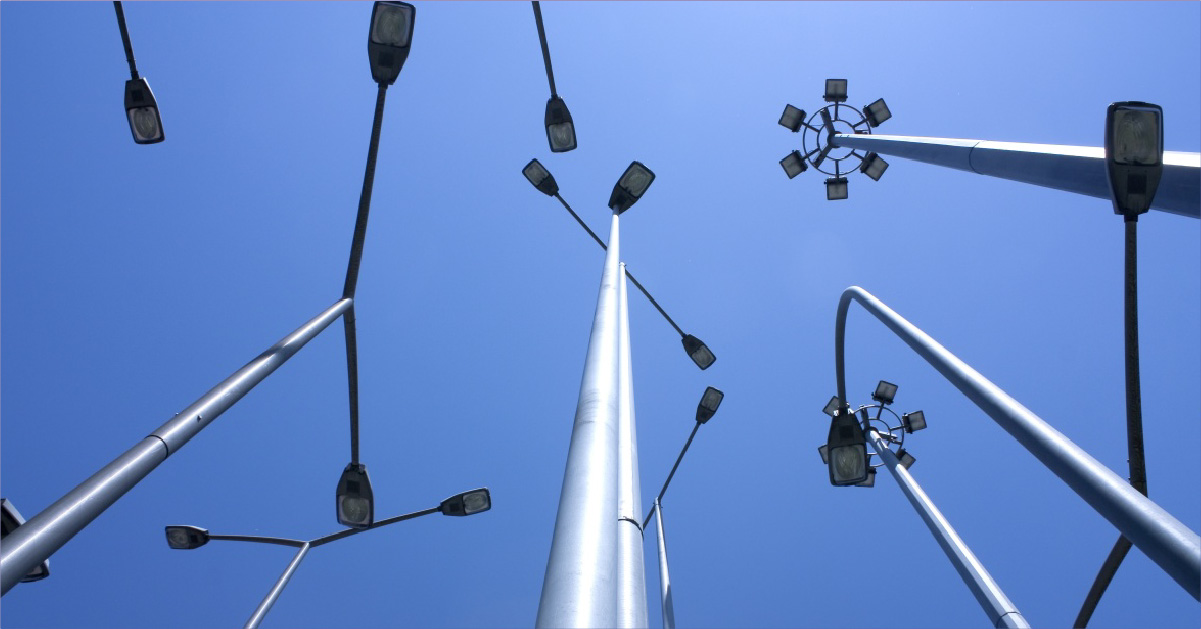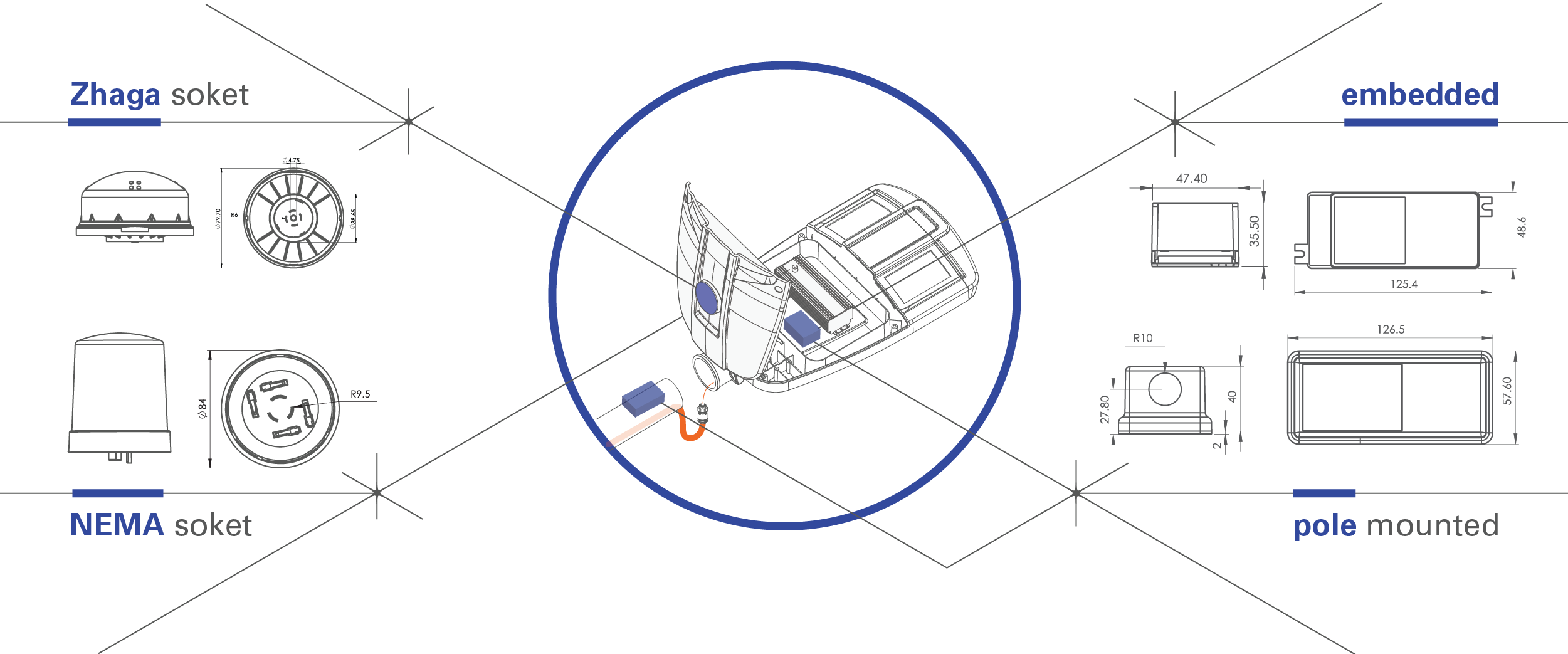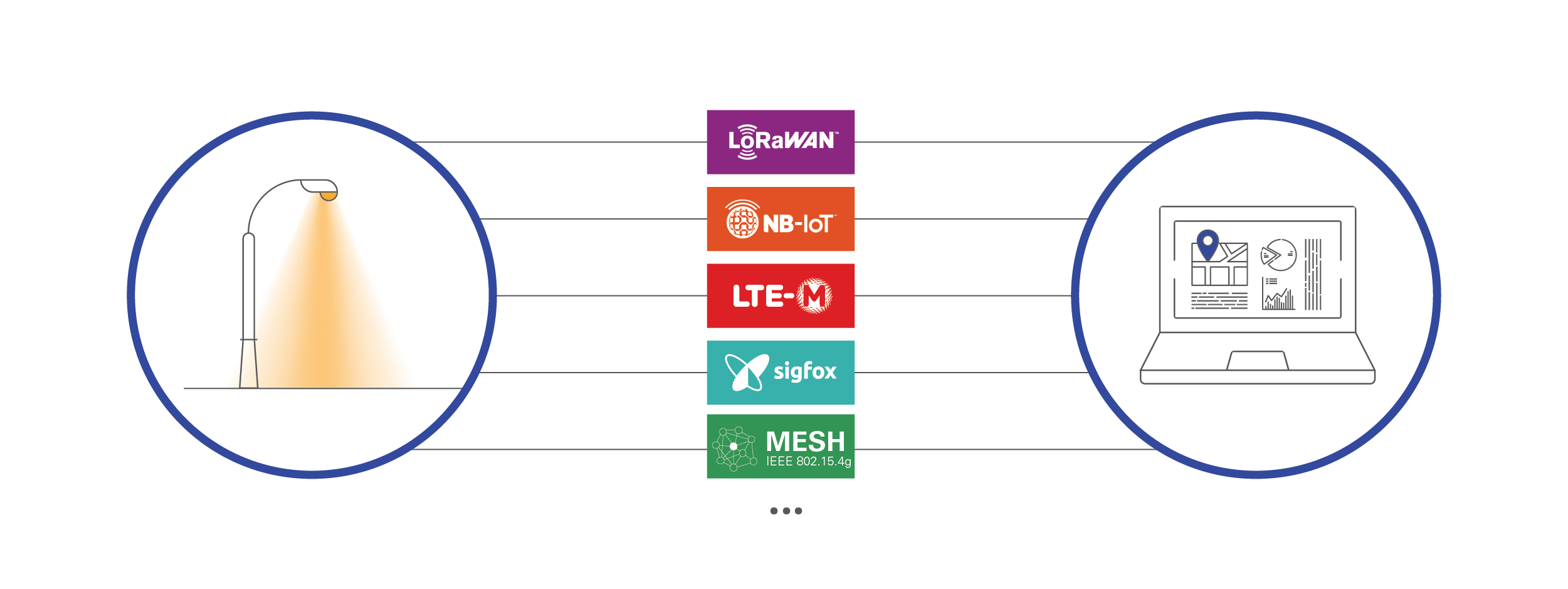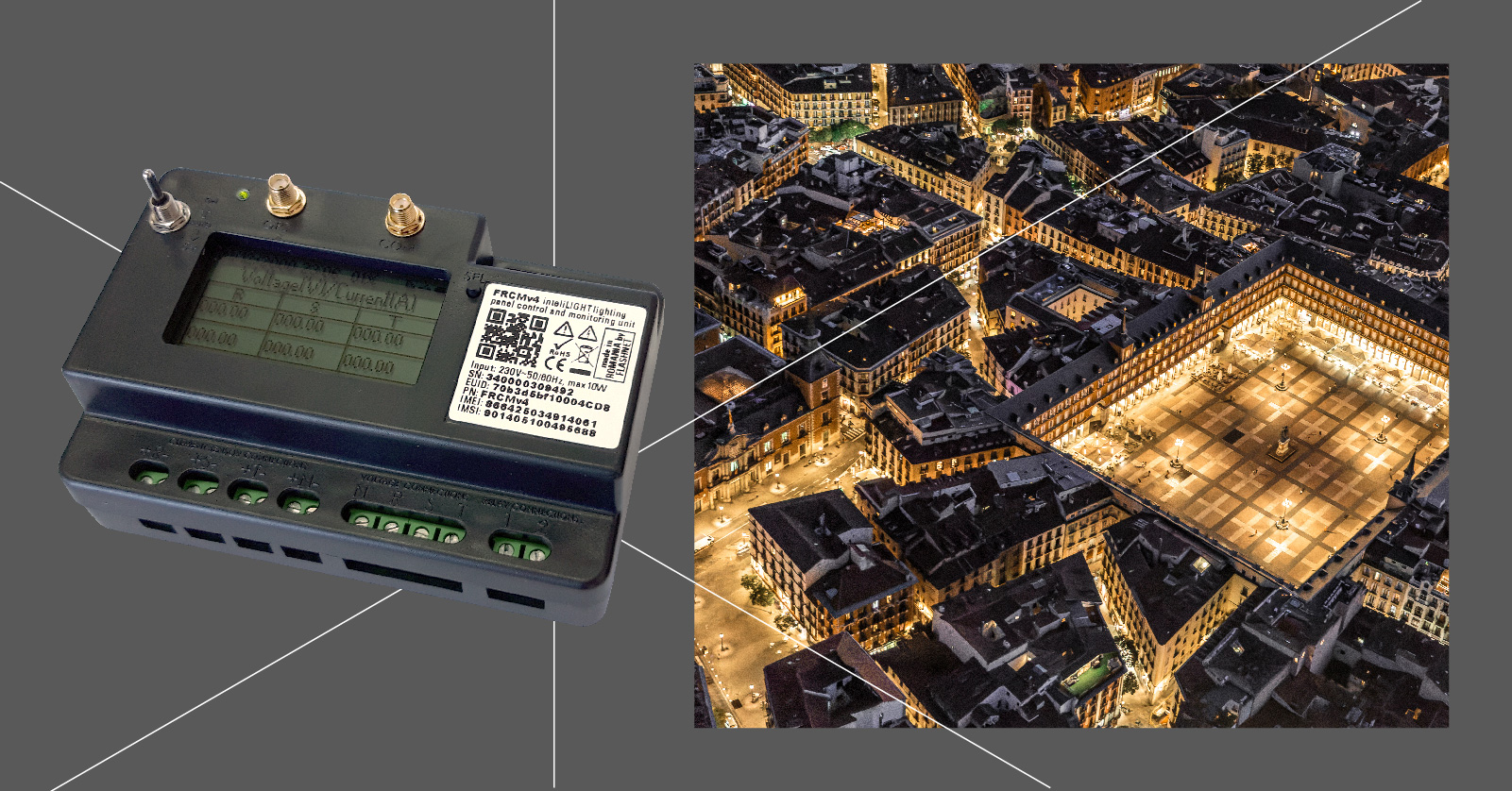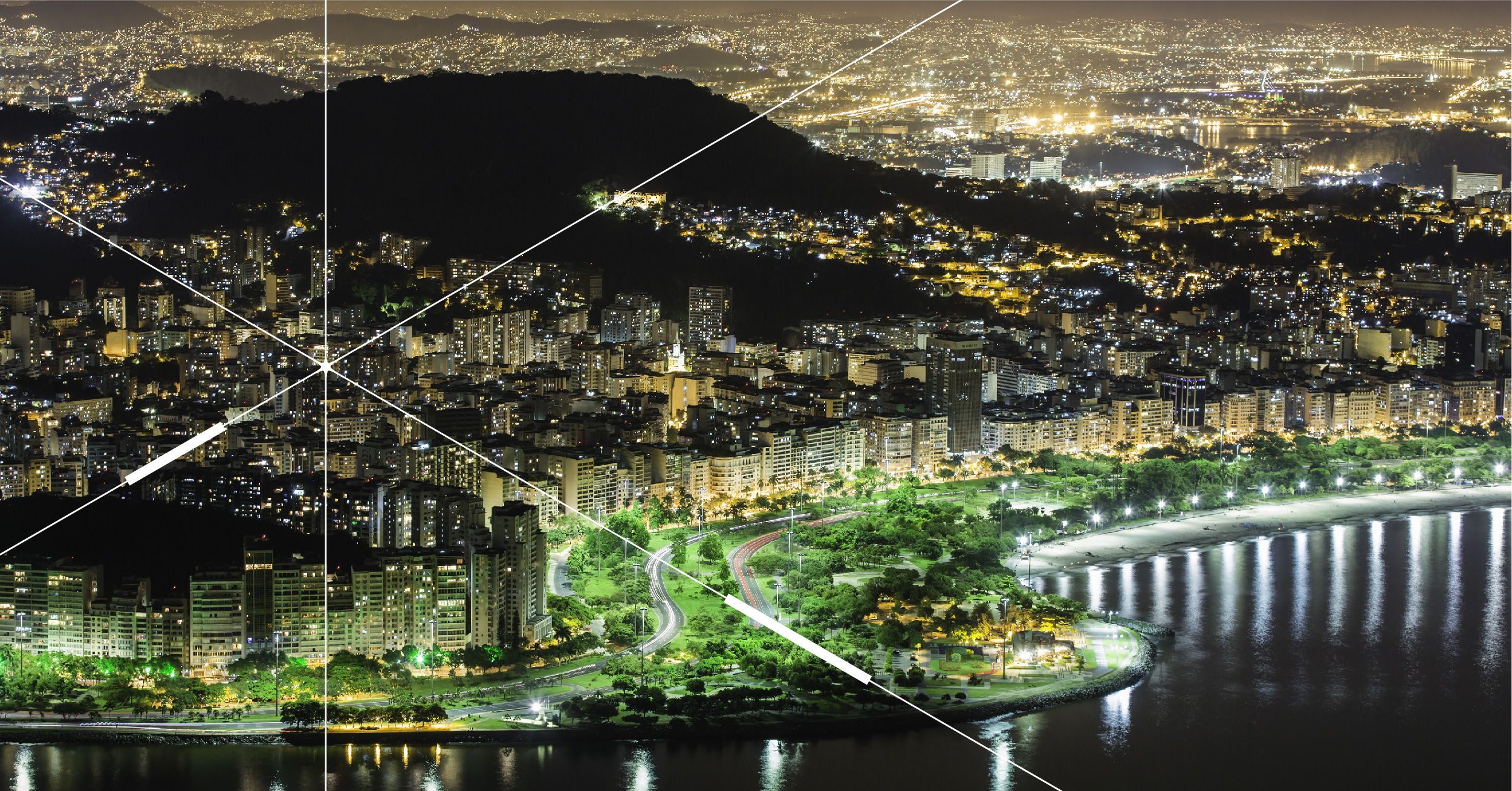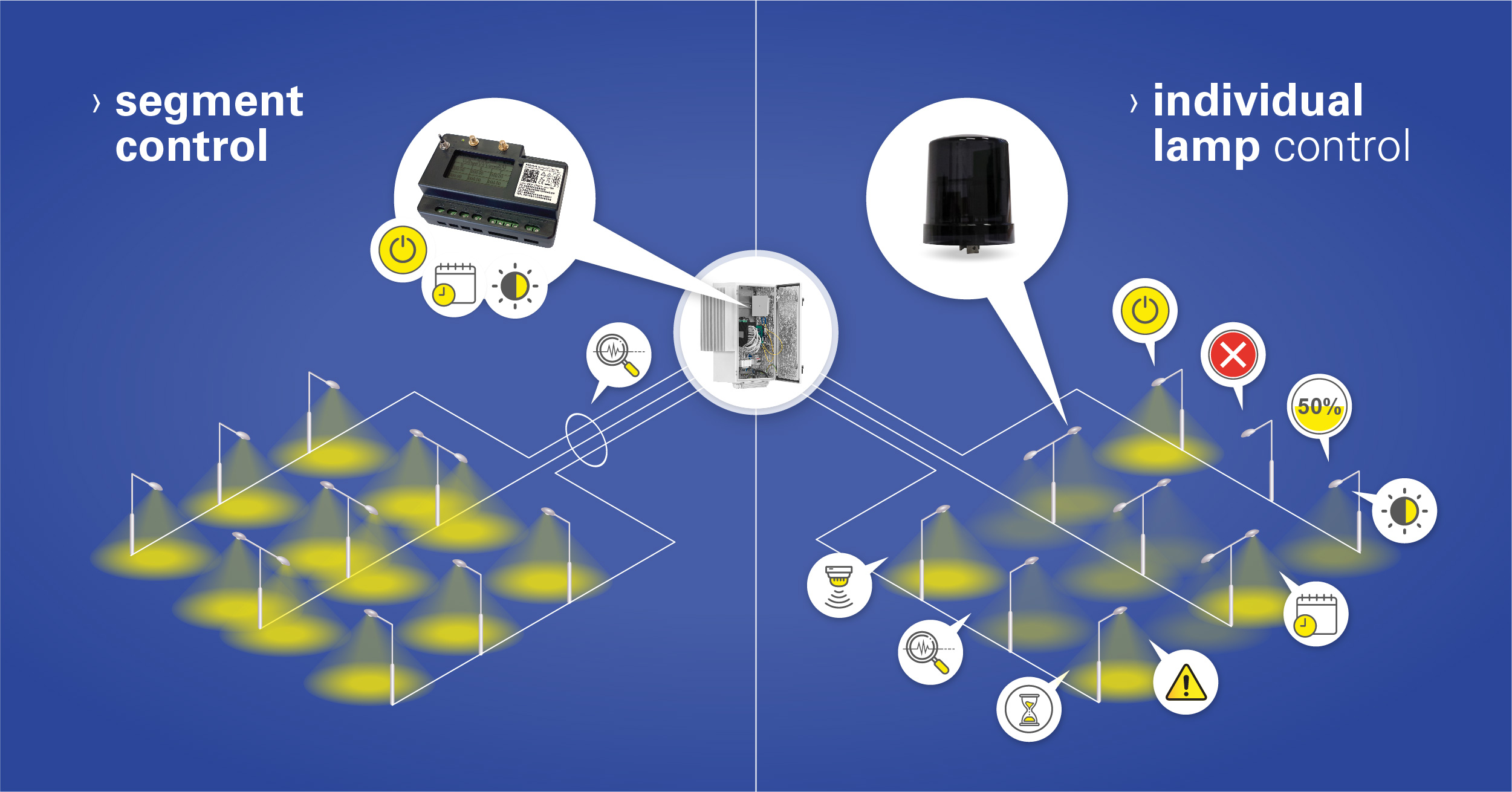Smart streetlights? 5 things you need to know.

Streetlights are a core element of any public lighting system. Nowadays, modern lamps can accommodate smart controllers for remote street lighting management. However, did you know that even older lighting infrastructures can receive a smart layer?
This article will answer 5 of the most important and relevant questions about smart street lamps, to help you make an informed decision when choosing a street lighting system for your project.
1. How did smart street lamps come to be?
Early lamps were used by Greek and Roman civilizations, where light primarily served the purpose of security. From candle lamps which required that a lamplighter tour the town at dusk, lighting each of the lamps, to oil and gas lamp lighting, to incandescent lights and finally to high-intensity discharge and LED lamps, public lighting has seen a continuous evolution and functionality improvement. Shifting from gas or petrol to electricity represented a remarkable and much needed change for everyday life.
Meanwhile, the Internet has become omnipresent, advanced from PC to mobile connections and has since adapted to almost any type of device. Broadband turned into narrowband, making it possible to send smaller messages without wasting energy and resources. This evolution made the Internet of Things possible, where devices of any type and size can be connected and can communicate with each other.
In this context of technological advancements, public lighting followed suit. LED lamps are not just isolated elements for lighting fixtures anymore, but part of more complex smart lighting infrastructures. Smart streetlight controllers enable individual lamp control, while communication and IoT technologies link devices and street lighting management software together. Therefore, lighting fixtures receive smart features and are now part of the connected lighting revolution, paving the way to smart cities.
2. What are the functionalities and benefits of smart streetlights?
Compared to traditional lamps (which can only be turned on and off in groups), smart streetlights can be individually handled.
How is this possible?
By installing smart controllers on each individual lamp (segment control also exists, but is not the focus of this article). Streetlight controllers can be installed inside the lamp by the producer or mounted on the lamp by an integrator. Their capabilities go beyond the remote on/off function, bringing smart features like autonomous operation, smart scheduling, dimming, parameter measurements or failure notifications at the fingertips of municipalities.
The most important benefit of individually controlled smart lamps is the access to information. With real-time data analysis, grid awareness empowers you to make informed, effective decisions. Other benefits include:
3. What is a smart streetlamp’s structure?
A smart street lamp consists of:
- Light source – the outstanding benefits of LEDs (extended lifetime and reduced power consumption) have favoured LED lamps in street lighting investments in the last few years, to the point where the older HID lamps are now rarely seen in street lighting upgrade projects worldwide.
- Lamp socket (optional, available mostly for HID lamps) – supports electrical connections and allows the lamp to be safely and conveniently replaced
- Ballast or driver – reduces the voltage and regulates the electric current to produce a steady light output. To support full-featured smart controllers, you will need an electronic ballast with dimming support (which is the case for most drivers nowadays anyway)
Here comes the twist – what makes a street lamp smart:
- Smart streetlight controller – enables individual lamp control, on/off/dimming functions, autonomous operation, smart scheduling, remote control, parameter measurements, malfunction notifications etc.
4. How can controllers be installed on smart lamps?
There are a few ways in which luminaire controllers can be connected to smart streetlights. First, it is important to know that you can decide to invest in new lamps or you can find a solution that is compatible with the fixtures you already have installed. Secondly, you need to differentiate among the various socket types and mounting options that are available.
Wire connections can be used to attach smart streetlamp controllers
This is the most flexible approach, as controllers can be mounted anywhere on the lamp or street lighting pole, being wire-connected to the lamp’s power supply. It is mostly used for retrofitting, as you can use the existing infrastructure to connect smart controllers, making it very fast and cost efficient to deploy: because you are updating the existing streetlights, there are no lamp investments and almost no public works needed.
Be careful, you might only be able to connect the controller to the pole, not to the lamp. Also, older lamps might not have DALI interfaces available. This means that the dimming option could no longer be available because, for dimming commands to be received, the communication needs to happen directly with the ballast. Not to worry, the other smart features will remain intact.
If you want to make sure that the controller can be connected to the lamp and that it supports dimming, you should check that:
- the lamp has an electronic ballast compatible with interfaces such as 0-10, DALI or DALI2 (dedicated protocols for digital lighting control)
- the lamp itself supports dimming
- the controller has dimming capabilities
Street lighting standardised plug-and-play connectors
As smart control is an important issue for all stakeholders in the outdoor lighting industry, there have been significant investments and initiatives in standardizing lamp connectors. The main reason is to facilitate smooth lamp upgrade and fast lighting controller installation. For instance, standardised connectors like NEMA or Zhaga come with plug&play mounting options that turn controller installation in a few-seconds job, keeping deployment costs at a minimum.
Using standardised connectors means that controllers can be installed on any lamp, as long as the controller is compatible with the lamp socket. Using streetlights with such connectors brings you all the advantages of smart lighting control and facilitates any future upgrades.
Smart street lamps with embedded controllers
If you need to install smart street lamps while keeping lamps’ architectural value (historical areas, for example), then embedded controllers might be the right choice for you. Sometimes having a NEMA or Zhaga controller mounted on the lamp is simply not an option, but you still need the benefits of a smart, fully integrated lighting system.
Embedded controllers are built to be particularly small, in order to fit inside the luminaire itself. This way, you favour aesthetics and also keep the advantage of creating a smart and integrated street lighting grid. If you are a smart lighting integrator or lighting service provider, you probably have the engineering capabilities to try to integrate the two devices yourself, but embedded controllers are mostly mounted inside the lamp directly from the production line.
Some lamp producers have developed their own control solution (some even preferring closed, proprietary control solutions), while others prefer to integrate third-party systems with their products. If you plan for flexibility and want to avoid being supplier-locked, the important difference is not the control system provider, but rather the solution’s interoperability. Only open control systems (open standard communications, API connection availability or TALQ/TALQ2 compatibility) will provide freedom of supplier choice for future smart lighting or smar city developments.
5. How do smart lamps communicate?
Communication is an essential element in any smart public lighting installation, acting as a binder among devices and software. The right communication technology can make the difference between a fully functional deployment and a syncopated one. Even though the lamp itself does not have an influence on the communication technology, the controller and the control solution provider have to be compatible with the communication technology you decide to use for your smart street lighting project.
A closed system, for instance, will be compatible only with the provider’s patented communication technology, which will require an investment continuity over time with the same producer. Choosing open protocol communications, on the other hand, will be compatible with third-party solutions and will give you more options for future investments.
When it comes to communication, you should also consider whether a public or private network best suits your project’s needs.
Public networks (e.g. NB-IoT, LTE-M, GSM) are installed and maintained by telecom operators who make sure that the network is secured and functional at all times (carrier grade security and functionality). Even though the user usually needs to pay for a monthly or yearly subscription, public networks rarely require installation fees.
Private networks (e.g. LoRaWAN, Wi-SUN etc.) are operated directly by the municipality or the street lighting provider (nobody has access to street lighting data). While installation costs are higher and users have to ensure the network maintenance and security themselves, private networks eliminate the cost of having to pay for a subscription and can be used for other smart city applications.
Bonus questions:
Can any outdoor streetlight be connected to a controller?
- Yes, there is a controller for any type of streetlight, be it HID, LED, part of an older infrastructure or modern, as long as the controller has an electronic control gear.
Can all lamps support the dimming control feature?
- Yes, provided that the driver is compatible with an interface such as 0-10V, DALI or DALI2.
Can I control the lamps in real time?
- It depends on the communication system. Cellular networks (NB-IoT, LTE-M etc.) are great candidates for constant, instantaneous communication. They allow nodes to communicate with the gateway in real-time, which makes it possible to execute commands like turning the lights on and off instantly.
How do solar-powered street lamps work?
- Solar-powered lamps have been around for quite a while now. A solar street lamp must overcome the fact that energy is produced during the day, but consumed during the night, and there are two ways to deal with this issue:
- With energy storage: the energy produced by the solar panels during the day is stored in a battery system, installed in each lamp or in every few lamps and used during the night to power the streetlight. As battery units are quite expensive, temperature-sensitive and unreliable, this solution is mostly used in remote areas, with limited access to the power grid
- Without energy storage: the energy produced by the solar panels during the day is delivered into the power grid and compensates for the energy that the lamp consumes at night. This version is preferred, as it does not require energy storage, nor solar panels for each lamp – which makes it more practical and affordable.





